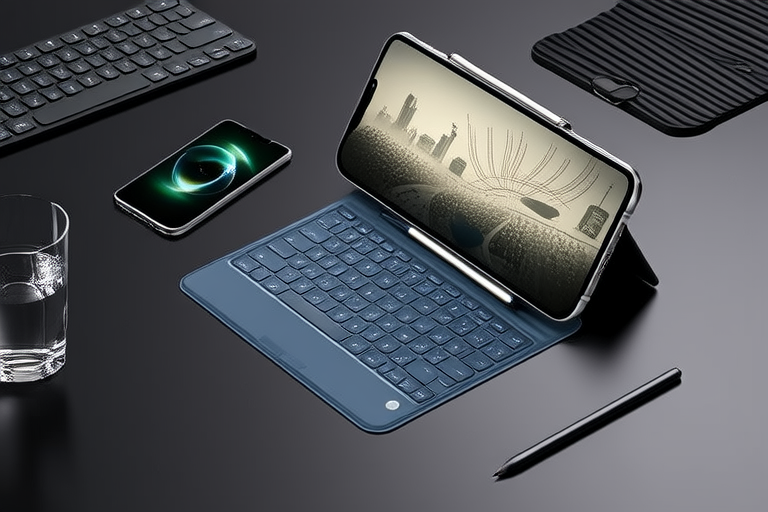Balancing Power and Portability: The Future of Smartphones and Tablets
Introduction
In an era where smartphones and tablets have become indispensable tools for communication, entertainment, and productivity, striking a balance between processing power and portability has never been more critical. These devices must offer robust performance to handle complex tasks while remaining lightweight and convenient to carry. The quest for this equilibrium involves addressing various technical challenges, from optimizing battery life to enhancing chip design. This article explores the ongoing efforts to achieve this balance and looks ahead at the innovations that will shape the future of smartphones and tablets.
Current Challenges
The primary challenge in balancing power and portability lies in managing energy consumption without compromising performance. Battery life remains one of the most significant bottlenecks, as users increasingly demand longer usage times between charges. Additionally, heat management becomes crucial as more powerful processors are integrated into smaller form factors. Hardware constraints, such as limited space for cooling systems, further complicate the design process. These issues highlight the need for innovative solutions that can effectively address these limitations.
Advancements in Technology
Battery Technology
Innovations in battery chemistry and design have significantly improved the longevity and efficiency of mobile devices. Lithium-ion batteries, once the standard, are being replaced by more advanced options like solid-state batteries, which promise higher energy densities and faster charging times. Companies are also exploring alternative materials, such as graphene, to enhance conductivity and reduce weight. These advancements aim to extend battery life while maintaining compact dimensions.
Chip Design
Advances in semiconductor technology have led to more efficient processors capable of delivering superior performance within constrained spaces. Manufacturers are investing heavily in research and development to create chips that consume less power while offering enhanced computational capabilities. Techniques such as multi-core architectures, dynamic voltage scaling, and improved thermal management contribute to better overall efficiency. These improvements enable devices to perform demanding tasks, such as gaming and video editing, without overheating or draining the battery too quickly.
Material Science
The use of lighter, stronger materials plays a vital role in reducing the weight of smartphones and tablets without sacrificing durability. Aluminum alloys and reinforced polymers offer excellent strength-to-weight ratios, making them ideal for constructing slim yet rugged devices. In addition, manufacturers are experimenting with new materials like carbon fiber composites and nanomaterials to further optimize structural integrity and reduce bulkiness. These innovations help ensure that portable devices remain practical and user-friendly.
Software Optimization
Efforts to optimize software play a pivotal role in maximizing device performance while minimizing resource consumption. Operating systems now feature sophisticated algorithms designed to allocate resources intelligently based on user activity patterns. For instance, background processes are paused when not actively used, conserving energy for essential functions. Developers are also leveraging machine learning techniques to predict user behavior and pre-load necessary data, thereby improving responsiveness and reducing lag times. Such optimizations ensure that users enjoy seamless experiences even when running multiple applications simultaneously.
Emerging Trends
5G Connectivity
The rollout of 5G networks has spurred demand for more powerful devices capable of handling high-speed data transfers and real-time interactions. With faster download speeds and lower latency, 5G enables new applications like virtual reality (VR) and augmented reality (AR), which require substantial processing power. As a result, manufacturers are developing chips specifically tailored for 5G connectivity, ensuring that users can fully leverage its potential without experiencing performance degradation.
Foldable Devices
The introduction of foldable displays represents a significant step toward enhancing both functionality and portability. By incorporating flexible screens, manufacturers can create devices that combine the benefits of traditional smartphones and tablets. When folded, these units function as compact handsets; when unfolded, they transform into larger screens suitable for multitasking and media consumption. Foldable designs not only expand display area but also offer greater flexibility in how users interact with their devices. However, challenges related to durability and cost remain obstacles that need to be overcome before widespread adoption occurs.
Augmented Reality (AR)
Augmented reality applications continue to push the boundaries of what mobile devices can achieve. From immersive gaming experiences to practical uses in fields like healthcare and education, AR demands significant computational resources. To support these advanced functionalities, developers are working on specialized hardware accelerators dedicated solely to rendering realistic graphics and tracking spatial information accurately. Furthermore, advancements in sensor technology allow for more precise location detection and object recognition, enhancing the realism and interactivity of AR experiences. As AR technology matures, we can expect even more sophisticated implementations across various industries.
Future Innovations
Next-Generation Batteries
Researchers are actively exploring next-generation battery technologies that could revolutionize mobile electronics. Solid-state batteries represent one promising avenue, offering several advantages over current lithium-ion alternatives. They exhibit higher energy density, faster charging rates, and increased safety due to reduced risk of thermal runaway. Another exciting prospect involves the development of flow batteries, which separate electrolytes from electrodes, allowing for continuous refueling through external tanks. These innovations hold great promise for extending operational time and reducing dependency on frequent recharging.
Quantum Computing
While still in its infancy, quantum computing holds immense potential for transforming mobile devices. Unlike classical computers, which process information using bits represented by either zeros or ones, quantum computers utilize qubits that can exist in multiple states simultaneously. This unique property allows them to solve complex problems exponentially faster than conventional systems. Although integrating quantum processors into consumer-grade smartphones and tablets presents significant engineering hurdles, breakthroughs in miniaturization and integration could eventually lead to ultra-powerful handheld devices capable of performing previously impossible calculations.
Sustainable Materials
In response to growing environmental concerns, manufacturers are increasingly prioritizing sustainability in their product designs. Eco-friendly materials, such as biodegradable plastics derived from renewable sources, are gaining traction as viable alternatives to traditional petroleum-based compounds. Additionally, recycled metals and other recyclable components help minimize waste during production cycles. By adopting sustainable practices throughout the supply chain, companies demonstrate commitment to reducing their carbon footprint while producing high-quality products that meet consumers’ expectations regarding performance and environmental responsibility.
Conclusion
The pursuit of balancing power and portability continues to drive innovation within the realm of smartphones and tablets. Through advancements in battery technology, chip design, material science, and software optimization, manufacturers are overcoming existing challenges to deliver increasingly capable yet convenient devices. Emerging trends like 5G connectivity, foldable displays, and augmented reality further underscore the evolving nature of these gadgets. Looking ahead, next-generation batteries, quantum computing, and sustainable materials present exciting opportunities for future enhancements. As technology advances, we can anticipate continued progress toward achieving optimal harmony between performance and portability, ultimately benefiting users worldwide.


